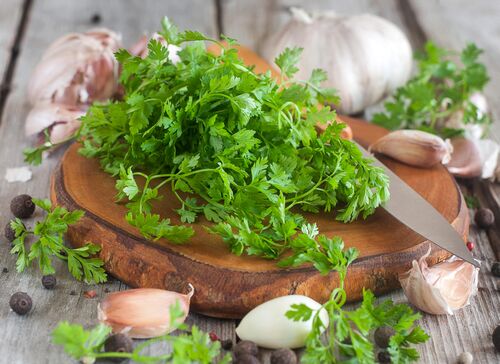Growing and Sowing Chervil

Chervil is an easy-to-grow and belongs to the umbelliferous family, just like parsley and anise, for example. The taste of chervil is also reminiscent of these two. Chervil is also called French parsley. The plant is actually a biennial herb and can grow up to 70 cm tall. But in our climate, it is often grown as an annual. The plant produces beautiful white flowers. Only the leaves are edible.
Growing your own chervil from seeds
There are several types of chervil, for example Myrrhis odorata and Vertissimo Chervil (Anthriscus cerefolium). Chervil is often grown in (vegetable) gardens. It is an easy-to-grow, usually biennial, but in our climate annual, herb that prefers to be in the shade. Although chervil is an herb, it is often used as a vegetable in the Netherlands, usually in chervil soup. The chervil ‘Myrrhis odorata is perennial and has a more anise-like, sweeter taste.
Sowing and planting chervil
Sowing chervil can be done from about March to September, depending on the variety. It can take quite a long time for seeds to germinate, especially during hot, dry periods, as it is a cold germinator. Pre-sowing is possible but quite difficult. Chervil is a light germinator, so don't cover the seeds with a layer of soil.
Position and soil for Chervil
Choose a semi-shaded spot in the garden, chervil does not like direct sunlight. The soil should be humus-rich, moist and well-drained. Before sowing, enrich the soil with compost.
How to care of your chervil plants
Kervel heeft veel vocht nodig, maar staat niet graag in een te natte grond. Daarom is regelmatig kleine beetjes watergeven en de grond rondom afdekken met een laagje mulch aan te raden. Kervel is gevoelig voor schimmel. Mochten de bladeren schimmel krijgen, verwijder deze dan. Geef af en toe wat voeding.
Chervil needs a lot of moisture, but it doesn't like standing in soil that is too wet. That is why it is advisable to water small amounts regularly and cover the soil all around with a layer of mulch. Chervil is susceptible to mold. If the leaves develop mold, remove them. Give some nutrition from time to time.
When and how to harvest chervil?
Chervil can be harvested as soon as the plant reaches about 10 cm in height. Regular harvesting stimulates growth and allows multiple harvests. Cut the leaves about 5 cm above the ground. When the plant starts flowering, it will lose its flavour.
How to preserve chervil
Chervil can be stored in a tightly sealed bag in the refrigerator for several days. It also can be frozen or dried, but it will lose a lot of its flavour.
Is chervil healthy?
Chervil is high in vitamin C, iron and magnesium, as well as other nutrients. It stimulates appetite and improves digestion. Chervil can be used to make tea or chervil soup, for example.
Chervil seeds in our collection
We have several varieties of chervil in our range. Apart from chervil, we also sell seeds of many other types of herbs, vegetables and flowers through our website, including many organic varieties.
Tips to grow chervil
Harvest the young leaves regularly. This ensures the plant to grow well and allows more frequent harvests. It also prevents the plant from flowering quickly, after which it loses flavour.



